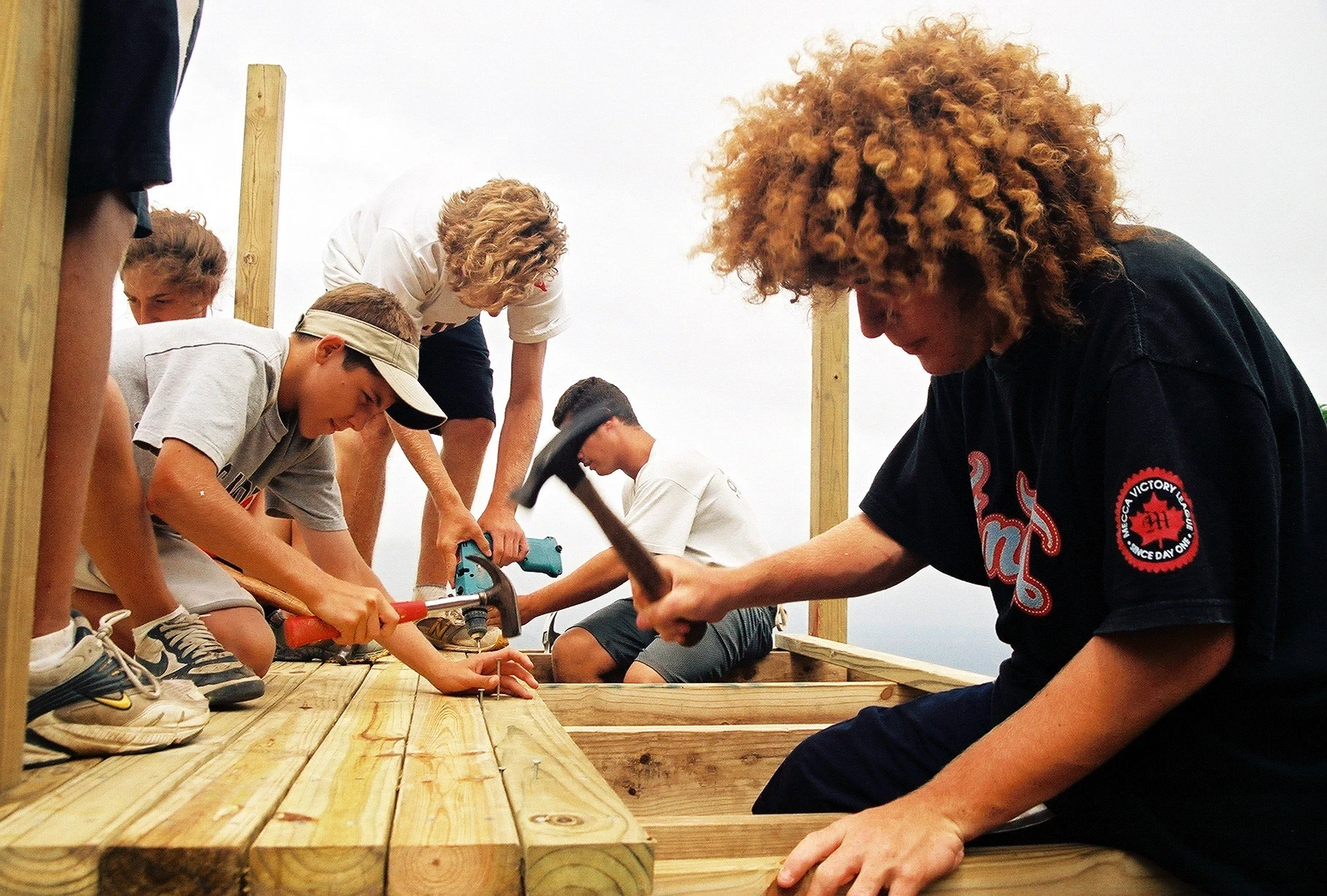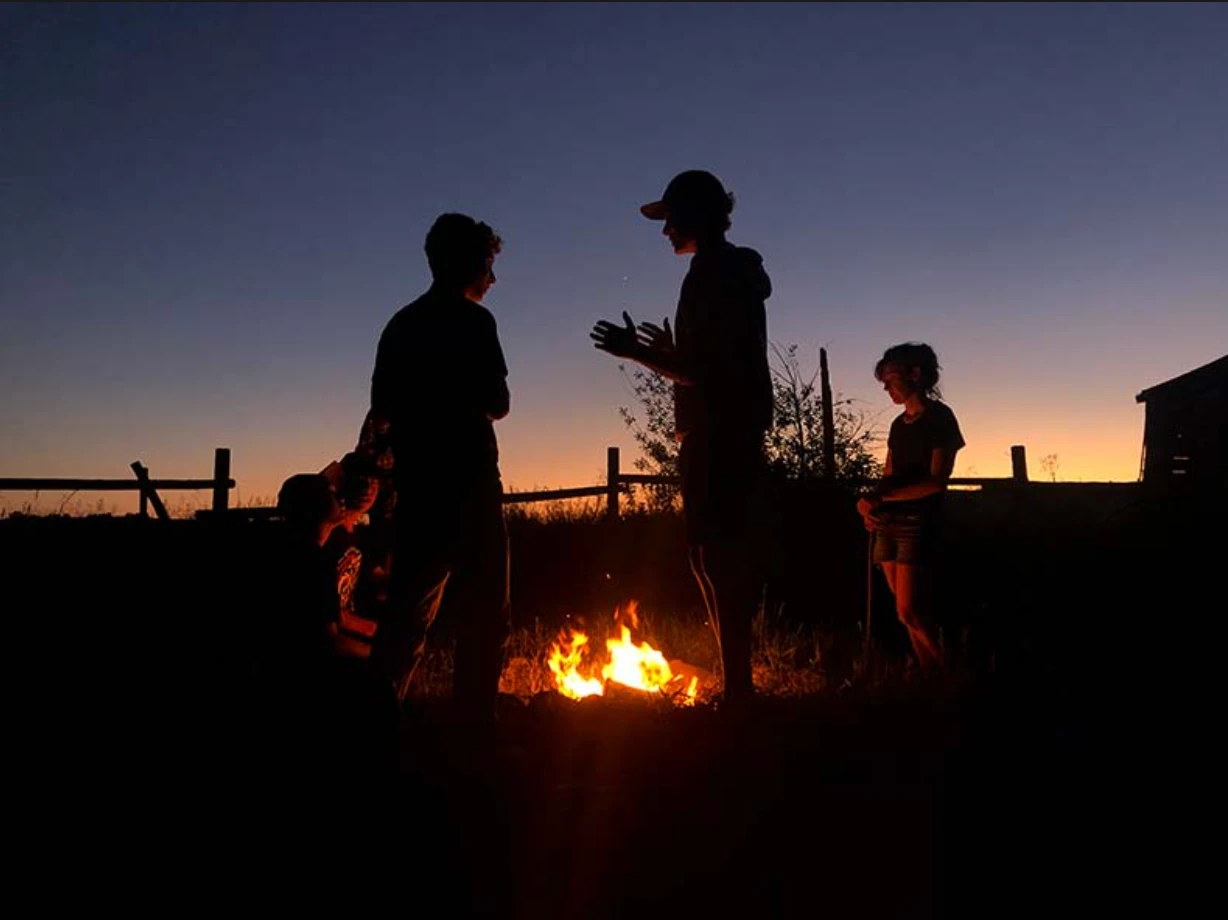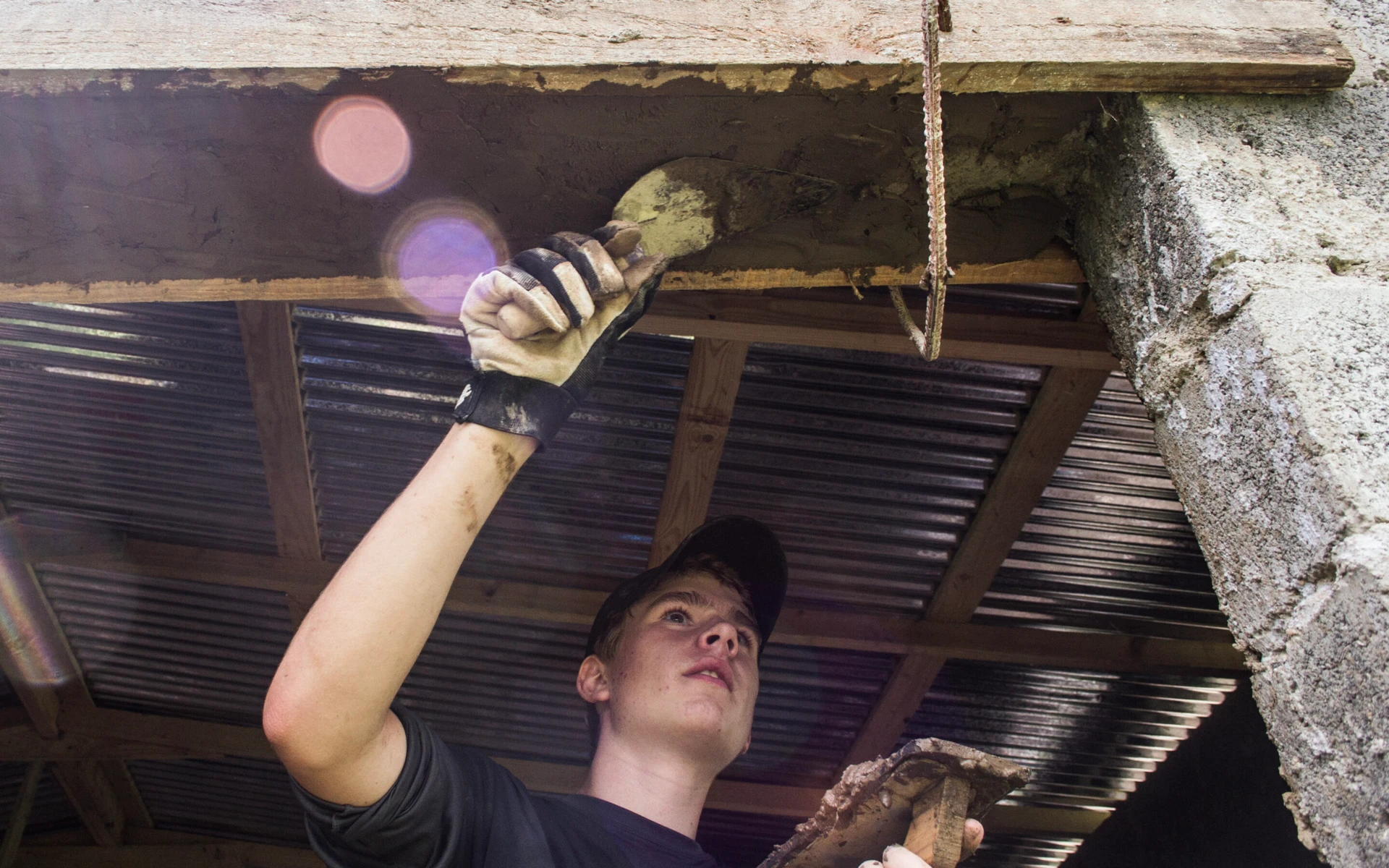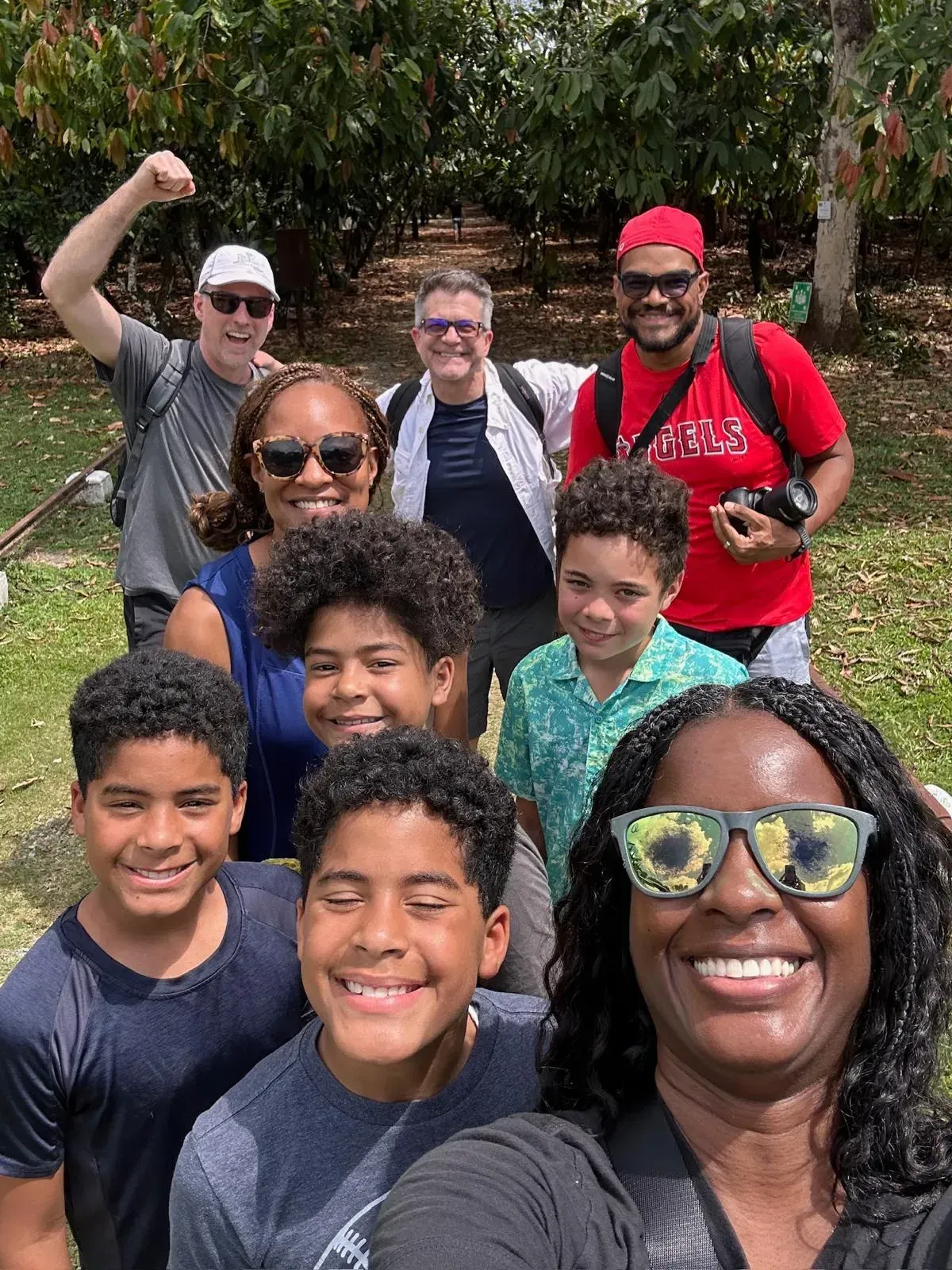The following is an article from “Glitter Magazine” that spotlighted VISIONS Director, Katherine Dayton, for the publication’s “Real People” feature.
REAL PEOPLE: Katherine Dayton, Executive Director of VISIONS Service Adventures
January 16, 2015
Glitter Magazine is all about Real People like you who rock! We recently sat down with Katherine Dayton, Executive Director of VISIONS Service Adventures, to find out how teens can get involved and go on these amazing life-changing adventures. To find out more, read on!
GLITTER: What can you tell us about VISIONS Service Adventures?
KATHERINE: VISIONS started 27 years ago with the idea of providing a Peace Corps type experience for teenagers. We believe in teens’ ability and drive to really make a difference, and in their desire to be part of something bigger. VISIONS fits that niche by running programs where we complete some pretty big projects for communities in need. And, of course, they have a lot of fun while doing so; after work hours and weekends are reserved for adventures and excursions.
GLITTER: When did you first start working for VISIONS Services Adventures?
KATHERINE: Right out of college in the summer of 1996. I worked on a VISIONS program in the Dominican Republic, and I returned for the following five summers. I’ve also worked with VISIONS programs in Peru, Montana, Ecuador, and Nicaragua.
GLITTER: Where do teens travel to with VISIONS Services Adventures?
KATHERINE: We have four programs in the U.S. that include Alaska, Mississippi, and two on Indian reservations in Montana. Then, we also have programs in the British Virgin Islands (BVIs), the Dominican Republic, Guadeloupe, Nicaragua, Peru, Ecuador & Galapagos, Cambodia, and Myanmar (Burma). We also have two middle school programs, one in the BVIs and one in Montana.
GLITTER: Is VISIONS Services Adventures a tour or a life changing experience?
KATHERINE: Not so much a tour… We figure that there are plenty of other opportunities in life to be more of a traveler/tourist. Instead, we are more like temporary community members and residents. We live and work in our home base communities, and we use that base for exciting weekend travel as well as some afternoon excursions. Many of our communities are places that we’ve been returning for more than 10 to 20 years, so we’re very much a part of things. Because of this one-of-a-kind experience the teens get through living within a community, coupled with adventures and excursions, there is no doubt that a VISIONS experience is life-changing.
GLITTER: What makes VISIONS a different experience from other programs?
KATHERINE: There are a few things… One is that we have been a community service based program from the start, so challenging and meaningful projects are our specialty. Since we know our communities so well—returning for years and staying in one place for the summer—it also allows us to do some longer-term planning with community partners in terms of these projects. So, in the end, we are fulfilling genuine needs for these communities, and that feels right.
Also, there’s an extraordinary immersion experience that comes with being part of the neighborhood and local scene. You get to learn and be part of traditions and experience the culture first hand. This makes it quite a bit different than some programs that only visit communities for a few days before moving on to the next place.
In addition to the service and cultural components, another thing rather unique about VISIONS is the emphasis on community building and communication. In addition to community building with our host community, we also focus on it with our own group by having meetings a few nights a week with kids and leaders. It’s a time to reflect on the volunteer projects, cultural experience, and also the process of living and working together as a group.
We focus on creating a positive and productive group dynamic. Almost all kids come on a VISIONS programs on their own (instead of with a group of friends), and we don’t have more than two kids come on the same program as friends. This means that everyone starts on a level playing field, and the inclusive group dynamic on Day One.
Another thing, and something that parents often ask about, is that we keep a 1 to 4 leader ratio. Leaders are very much part of the group dynamic and part of daily life. This ratio also enhances safety of the program, and we have a long history of safe programs.
GLITTER: Describe a daily day in the program.
KATHERINE: Each day, you will work hard, and you will play hard. After work, there is plenty of time to explore, enjoy your surroundings, absorb the culture and make friends with peers and local people.
Participants typically choose their worksite four days a week. On the fifth day you will be on “home base crew” with a few other participants and a leader. The crew wakes up early to cook breakfast for everyone, cleans our home base, does errands, and shops at local markets for the rest of the day’s meals. It’s a great way to live the life of the locals!
We typically work until mid-afternoon most days, and have time before dinner to participate in artisan workshops, take short hikes, go swimming, play games with neighborhood kids, or to simply have free time to relax or stroll in the community.
No matter which program you choose, weekends are for traveling to the best sites and attractions. We go to Machu Picchu in Peru, explore the Galapagos in Ecuador, and backpack through Glacier National Park in Montana. Our adventures take us through sprawling markets, off the beaten path with friends from the host community and, in Alaska, up the side of a glacier. Some programs also include day stays with local families.
Three to four nights a week participants and leaders have group meetings that last about an hour. This deliberate slow-down time allows everyone to get to know each other while reflecting together on our volunteer and cultural experience. We take a step back to allow communication to flow openly and voluntarily.
That pretty much encapsulates a day in the life.
GLITTER: How can teens get involved with VISIONS Services Adventures?
KATHERINE: The best resource is our website where they can look up the different VISIONS programs and watch a short video. We also love talking to any kids or parents on the phone to answer additional questions.
There is an application form on our website as well. Kids complete a questionnaire about why they’d like to attend; they choose their program location; they also provide a reference of a teacher or an adult who knows them well (coach, employer, mentor), and we check that reference.
After enrolling, kids and parents receive online login pages with packing lists and all the information needed to prepare for an amazing summer.
GLITTER: What is your core value at VISIONS?
KATHERINE: I’d say that in a nutshell, our core values are collaborative service work and cross-cultural living to help our teen volunteers understand a complicated world and learn meaningful ways to contribute productively.
GLITTER: What are your goals for 2015 and 2016?
KATHERINE: To complete a lot of new and needed projects, including completing a medical center/community building in Nicaragua, expanding water systems in Peru, and continuing to develop relationships with seniors on our Montana reservations, among many other great projects.
Also to expose as many teens as our programs can accommodate to all of the life changing possibilities of a VISIONS summer, including making life-long friends with other group members and people from these global communities.
GLITTER: What advice do you have for teens that want to help others, but don’t know where to start?
KATHERINE: There are a lot of great resources, including DoSomething.org, school clubs, and local nonprofits that kids can plug into. Just making that first leap and getting involved—whether serving meals at a soup kitchen, helping with a fundraiser, or following up on a project idea that helps make a difference in some way. This may be for the environment, animals, social service causes, whatever they feel passionate about.
I think it’s also important to make a commitment that involves a certain amount of time. Not every day or every project is going to be exciting at first, but the real learning and fulfillment often comes by way of sticking it through, seeing it to some sort of benchmark. By staying with something for a while, you also learn about the challenges of service work; you learn to work with people and work through issues; you also learn about your own capabilities and how much you have to offer the world if you’re committed.






